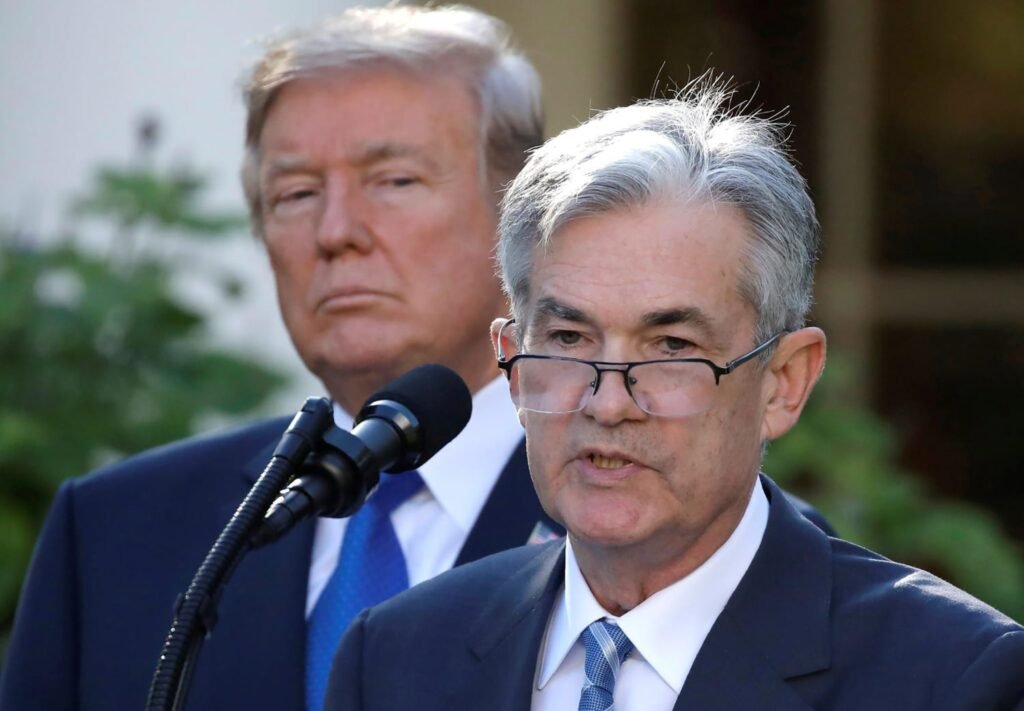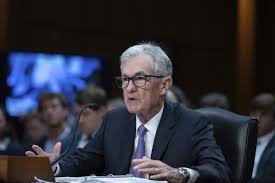Jerome Powell, Chairman of the U.S. Federal Reserve, is a key figure in the world of economics. Appointed to the role in 2018, Powell has had to navigate numerous challenges, including the global pandemic and inflationary pressures. His decisions affect everything from the job market to the stock market, making his leadership critical for both the U.S. economy and the global financial system.
In this article, we will explore Jerome Powell’s background, the impact of his leadership on the economy, and the challenges he faces moving forward.
Who is Jerome Powell?
Jerome Hayden Powell was born on February 4, 1953, in Washington, D.C. He graduated from Princeton University and later earned a law degree from Georgetown University. Before becoming Chairman of the Federal Reserve, Powell held roles in the private sector, including at investment firms such as The Carlyle Group. He also served as a Governor on the Federal Reserve Board, a position he was appointed to in 2012 by President Barack Obama.
Powell’s diverse experience in both law and finance prepared him for the challenging role at the Fed. In 2018, President Donald Trump nominated Powell to lead the Federal Reserve. Since then, Powell has earned a reputation as a pragmatic leader who listens to data and strives for a balanced approach to economic challenges.
Powell’s Leadership Style at the Federal Reserve

Jerome Powell’s leadership style is often described as measured and pragmatic. He has demonstrated a willingness to make tough decisions while also emphasizing transparency and communication. Unlike some of his predecessors, Powell has been known to be less ideologically driven, focusing instead on the data and the facts at hand.
This style of leadership became evident early in Powell’s tenure, especially when the U.S. economy was growing at a steady pace. The Fed under Powell initially raised interest rates to combat potential inflation. However, when the COVID-19 pandemic struck, Powell quickly shifted to a policy of aggressive intervention to stabilize the economy.
The COVID-19 Pandemic and Powell’s Response
The outbreak of COVID-19 in 2020 presented an unprecedented economic challenge. In response, Powell took swift action to protect the U.S. economy. One of his first moves was to lower interest rates to near zero, which made borrowing cheaper for consumers and businesses. Additionally, Powell implemented an unprecedented asset purchasing program, buying trillions of dollars’ worth of government and mortgage-backed securities to ensure liquidity in the markets.
These decisions helped prevent the economy from falling into a deeper recession. By providing the financial system with ample liquidity and lowering borrowing costs, Powell played a key role in keeping businesses afloat and supporting the labor market. His leadership during this period was praised for its boldness and for his clear communication with the public.
Powell’s Approach to Inflation Control
As the economy began to recover from the pandemic’s initial shock, inflation became a growing concern. Prices for goods and services surged due to factors like supply chain disruptions, rising demand, and labor shortages. Powell, who had initially downplayed inflationary pressures as “transitory,” soon acknowledged the growing risks of sustained inflation.
To address this, Powell and the Federal Reserve began raising interest rates in 2021. The goal of these rate hikes was to cool down the economy by making borrowing more expensive, thereby reducing demand. While higher rates can slow inflation, they also risk slowing economic growth and potentially leading to a recession.
Powell’s challenge in balancing inflation control with maintaining economic growth is ongoing. As inflation remains above the Fed’s target, Powell faces mounting pressure to act decisively while being mindful of the broader economic picture.
The Job Market and Powell’s Impact

One of the key areas where Powell’s decisions have had a significant impact is the U.S. labor market. When the pandemic hit, millions of Americans lost their jobs. Powell’s actions, such as low interest rates and fiscal support programs, played a major role in facilitating a recovery in the job market.
By mid-2021, job growth was strong, and unemployment had dropped significantly. However, Powell’s work is not done yet. While the unemployment rate is low, there are still challenges in the labor market. Some sectors, like hospitality and healthcare, continue to face staffing shortages. Additionally, there are issues like wage growth and labor force participation that Powell and the Federal Reserve must address to ensure a full recovery.
The Stock Market and Wealth Effects
Powell’s policies have also affected the stock market. Low interest rates, combined with the Fed’s large-scale bond purchases, helped drive up asset prices. For investors, this created a favorable environment where stocks performed well, benefiting wealthy Americans who hold large amounts of financial assets.
While this has been beneficial for investors, it has also drawn criticism. Some argue that the Fed’s focus on the stock market and financial markets has disproportionately benefited the wealthy, while not doing enough to address income inequality or wealth disparities.
Nonetheless, Powell’s decisions to support financial markets during the pandemic were viewed as essential for stabilizing the economy. The stock market’s recovery in 2020 and 2021 was a sign that Powell’s interventions had been successful in restoring confidence in the financial system.
Powell’s Challenges Moving Forward
Despite the successes, Jerome Powell faces a number of significant challenges moving forward. Perhaps the biggest is managing the ongoing inflationary pressures. While inflation has started to cool somewhat, it remains above the Federal Reserve’s target of 2%. Powell and his colleagues at the Fed must navigate how to bring inflation down without triggering a recession or causing significant economic pain.
Rising Interest Rates and Potential Recession
Raising interest rates is a powerful tool for fighting inflation, but it also carries risks. If rates are raised too quickly or too high, they could lead to an economic slowdown or even a recession. Many economists and policymakers, including Powell, have expressed concerns about the potential for an economic downturn if rate hikes continue at a rapid pace.
Powell has emphasized that the Fed’s goal is to achieve a “soft landing,” where inflation is reduced without derailing the economic recovery. However, achieving this delicate balance is no easy task. If inflation remains persistent, Powell may be forced to act more aggressively, risking an economic slowdown in the process.
Global Economic Uncertainty
Another challenge for Powell is the ongoing global economic uncertainty. The U.S. economy is deeply intertwined with the rest of the world, and events like trade disputes, geopolitical tensions, and disruptions in global supply chains can have a major impact on the Fed’s policies. For example, tensions with China or the ongoing war in Ukraine could affect global trade and inflation, which in turn would influence Powell’s decisions on interest rates and monetary policy.
Additionally, Powell must consider the policies of other central banks around the world. Central banks in the Eurozone, the U.K., and other major economies also play a role in shaping global economic conditions, and Powell’s actions must account for the interconnectedness of the world economy.
Conclusion
Jerome Powell’s leadership at the Federal Reserve has been defined by pragmatism and adaptability. From his response to the COVID-19 crisis to his efforts to manage inflation, Powell has been at the center of economic decision-making during some of the most challenging times in recent history.
His actions have had a profound impact on the U.S. economy, from the recovery in the job market to the growth in financial markets. However, as inflation remains high and the risk of an economic slowdown looms, Powell faces difficult decisions ahead. His ability to navigate these challenges will be crucial in determining the future direction of the U.S. economy.
While the road ahead is uncertain, Jerome Powell’s steady leadership and data-driven approach will continue to shape the economic landscape for years to come. His tenure at the Federal Reserve has proven that effective leadership requires a balance of caution, boldness, and clear communication—a balance that Powell has managed to strike in the face of unprecedented challenges.






